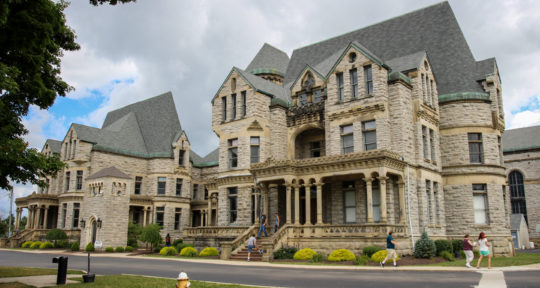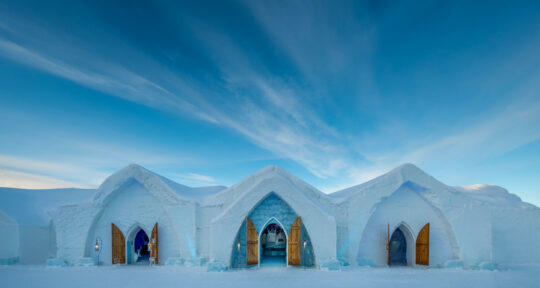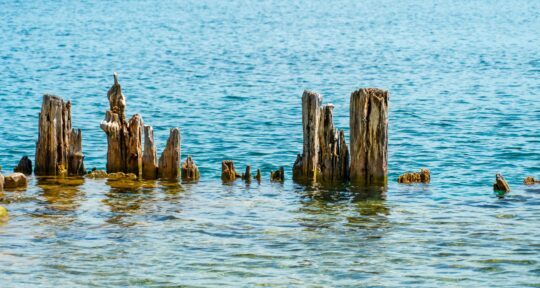After an incredibly scenic 45-minute drive north of Vancouver, the Britannia Mine Museum is impossible to miss. Located just off of British Columbia’s Sea-to-Sky Highway on Squamish First Nations land, the massive white structure juts out from the side of the mountain and commands attention.
The Britannia Mine was a functioning mine from 1904 until 1974. Ore was first discovered here in 1888 by Alexander Forbes, who happened upon a patch of mineralized rock while out hunting. At one point, more than 60,000 people lived nearby and worked in what was once the largest copper mine in the former British Empire. Over seven decades, workers extracted more than 50 million tons of ore that produced copper, zinc, lead, cadmium, silver, and gold. Today—despite floods, fires, and rock slides—a statue of a man opening the mountain to find copper memorializes the great fortunes that the mine provided for the town of Britannia.
In 2010, the mine underwent a massive renovation, opening as the Britannia Mine Museum. Visitors can pan for gold and gemstones, ride an underground train into an early haulage tunnel, learn about the history of the mine, and experience a new multi-sensory, live-action attraction entitled BOOM!
“We’re here to challenge the idea that museum tours have to be dry or boring,” says museum educator Derek A. Jang. “It’s always a pleasure watching people’s faces when they head underground or see the BOOM! show. Even through their [face] masks, I can tell when we’ve blown away their expectations.”
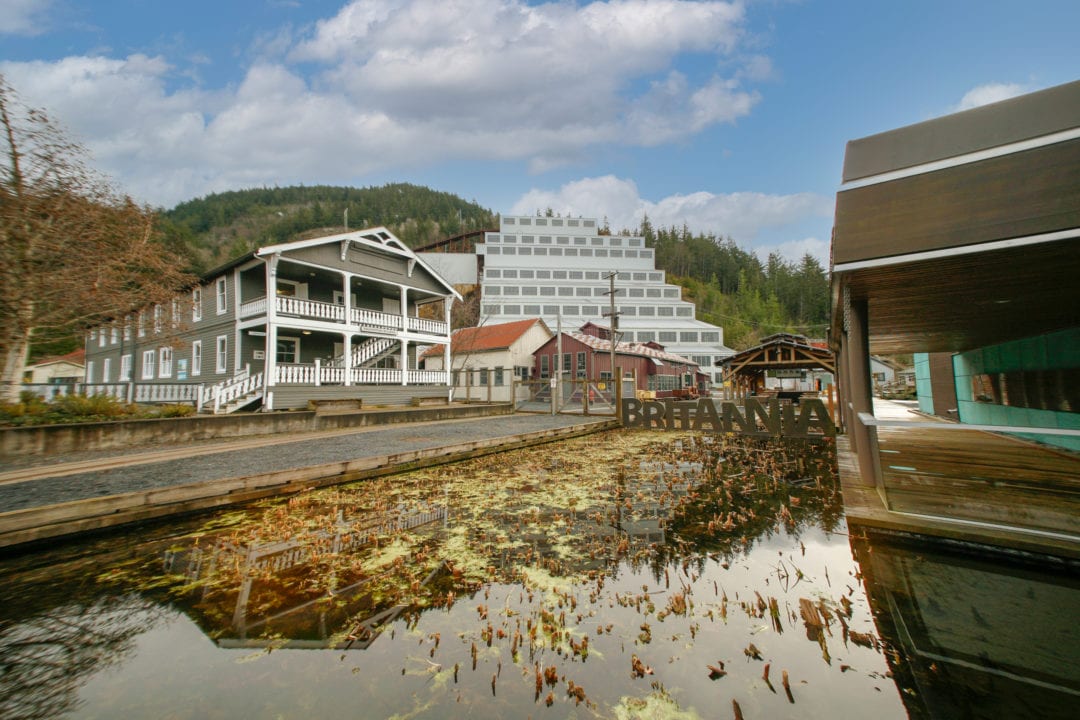
Underground train
My tour begins inside of the large white structure named Mill 3. There’s a chill in the air and my first thought is that the raw, exposed walls and pipes would make a great backdrop for a horror movie or underground nightclub. I’m not far off: The mine has been used as a filming location for countless television shows and movies, including The X-Files and Supernatural.
After exiting the Mill, I venture into The Chatterbox Café to warm up with a cappuccino. The walls of the cafe are filled with photos of the long list of actors who have filmed projects at the mine, including Richard Gere, David Hasselhoff, Alicia Silverstone, and Ashley Judd.
The coffee warms me up just in time to head into another cool, dark, and damp environment. I place a hard hat on my head, preparing to be transported back to the early 1900s when miners would hop on a similar train car and head into the mine for a hard day’s work. As I step into the bright yellow car, I’m thankful that I’m not claustrophobic. We descend into an early haulage tunnel that appears to be closing in around us.
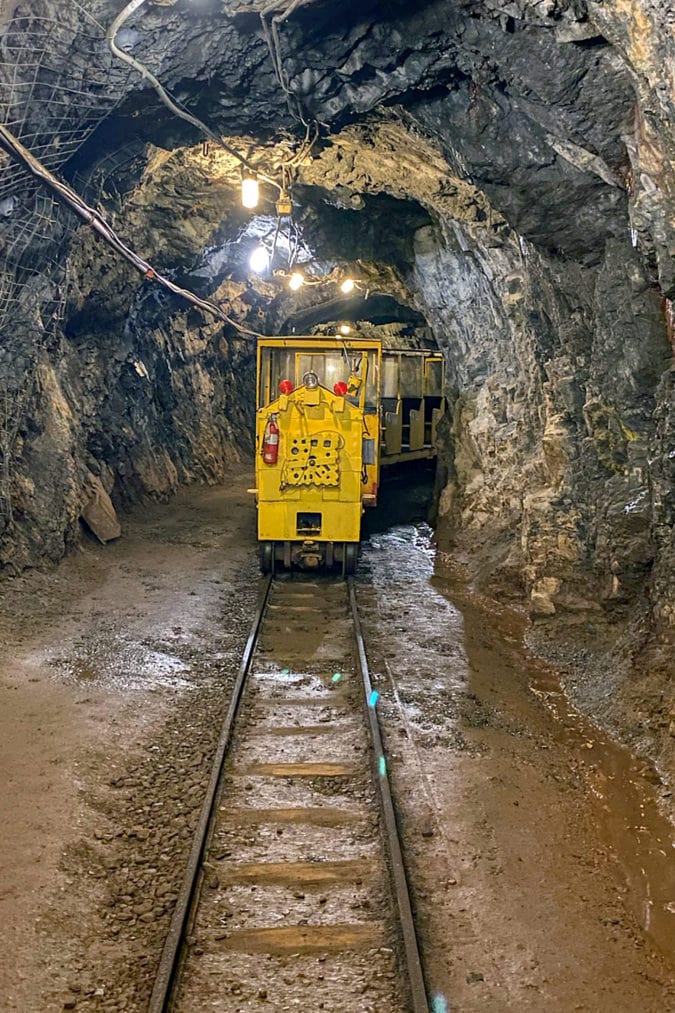
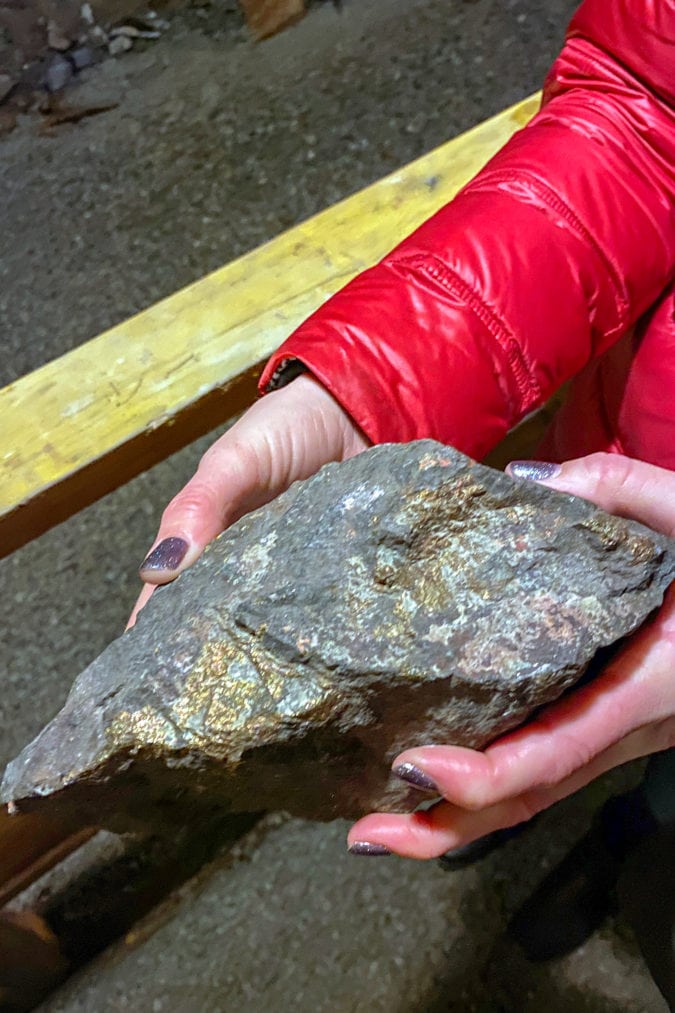
Marianna Hammerstrom, the museum’s historic interpreter and our train conductor, shouts over the roar of the train’s engine: “Arms and legs inside at all times!”
As the train enters the underground tunnels, Jang says, “A lot of our guides would say the best part of working here is operating the machinery. I wish I could go back in time and tell my 5-year-old self that I’ll be a train conductor when I grow up.”
Once inside a tunnel, we ride along for a few moments before hopping out to watch staff demonstrate how miners drilled for ore. I witness the evolution of mining equipment from a basic hammer and chisel to a large power drill that noisily chips away at the tunnel wall; thankfully earplugs are provided.
Miners worked by candlelight before switching to carbide lamps, and one of my favorite parts of the underground train ride comes when a staff member shuts off the modern electric lights and lights a small candle; the mine glows eerily.
We exit the tunnel and I have the honor of upholding the long-standing tradition of pulling a rope and sounding an alarm. While the mine was in operation, the sound signified that the miners were finished for the day and everyone had exited safely, bringing relief to everyone in town.
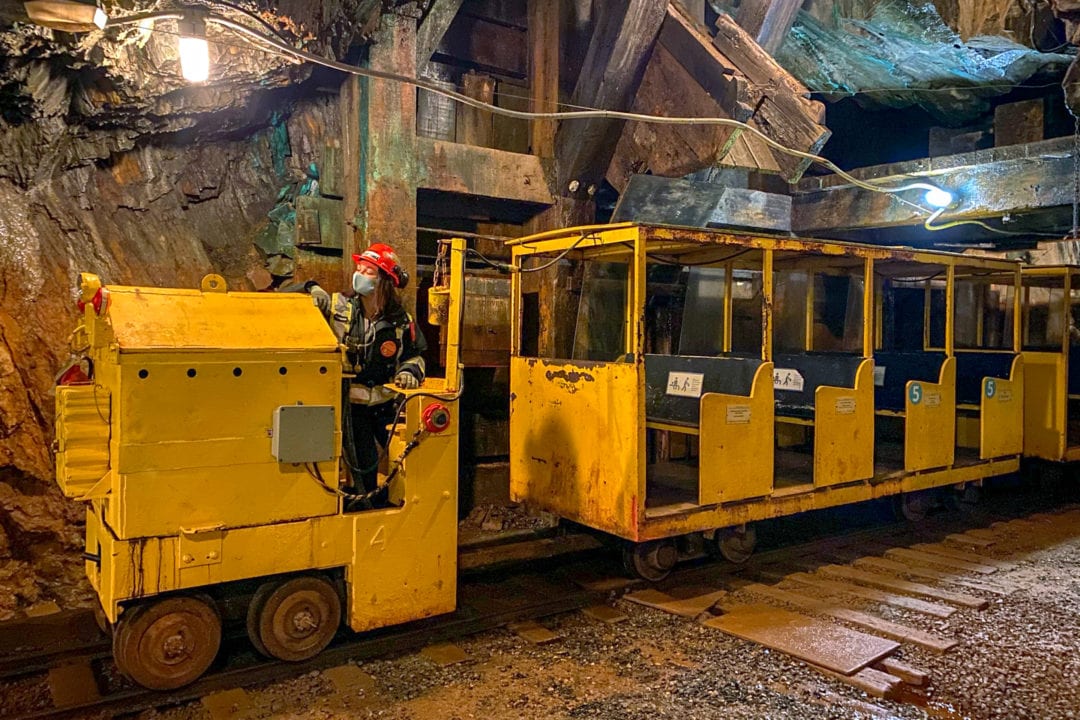
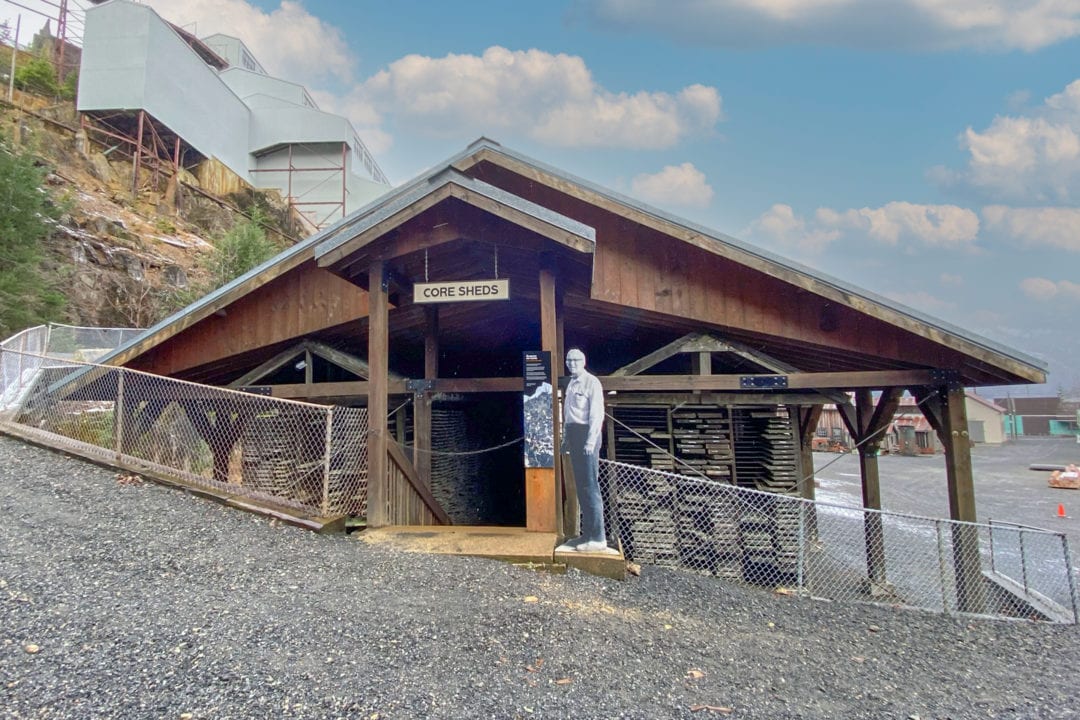
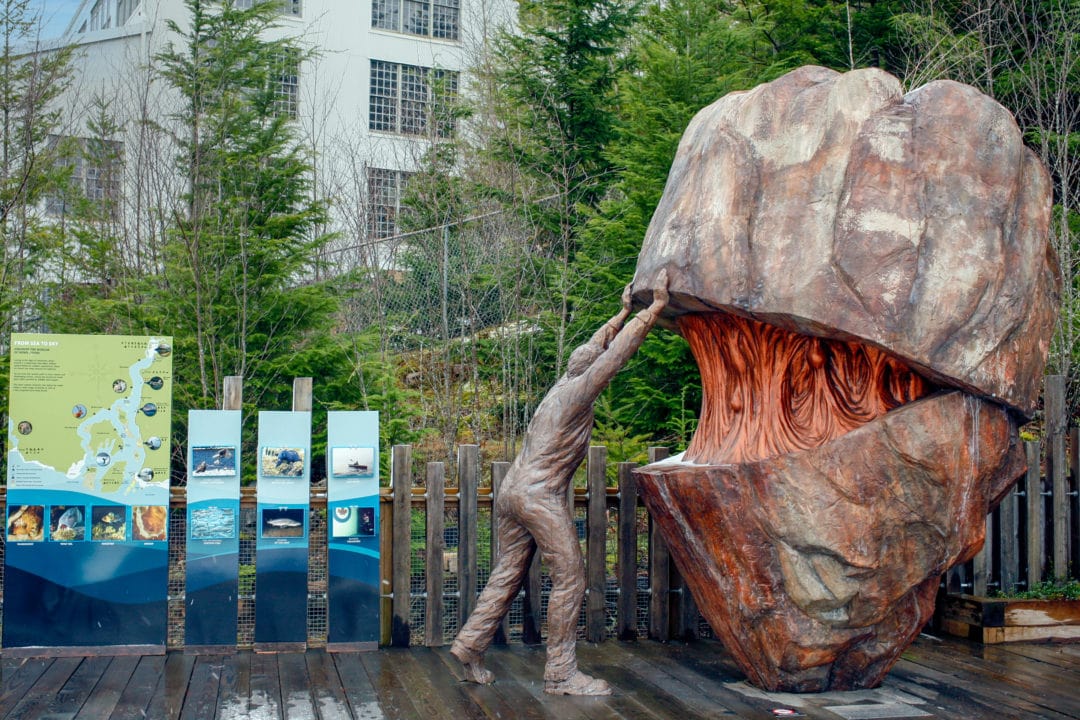
Loud noises
Speaking of loud sounds, the newest attraction at the mine is BOOM!, which brings visitors back to the days when all 20 stories of the mine were bustling. During the video presentation, I’m able to experience what the mine looked and sounded like during its heyday. Sparks fly, lights flash, and I hear the deafening roar of the machines that were once ubiquitous in the town of Britannia.
Our tour concludes and we exit through the Beaty Lundin Visitor Centre. More than just a kitschy souvenir shop, the visitor center includes interactive displays, artifacts from the mine’s history, and exhibits such as the Mining Hall of Fame.
In the Gold Panning Pavilion, I gladly accept a blue pan and plunge it into a pool of warm water. I scoop sand and water into my pan and shake it, searching for gold. I repeat this several times but find only sand—it’s not my lucky day, but I have fun anyway.
If you go
While walk-ins are allowed at Britannia Mine Museum, it’s highly recommended to book your tickets in advance. The museum is open 9 a.m. to 4:30 p.m. on weekdays and 9 a.m. to 5 p.m. on weekends and holidays.

